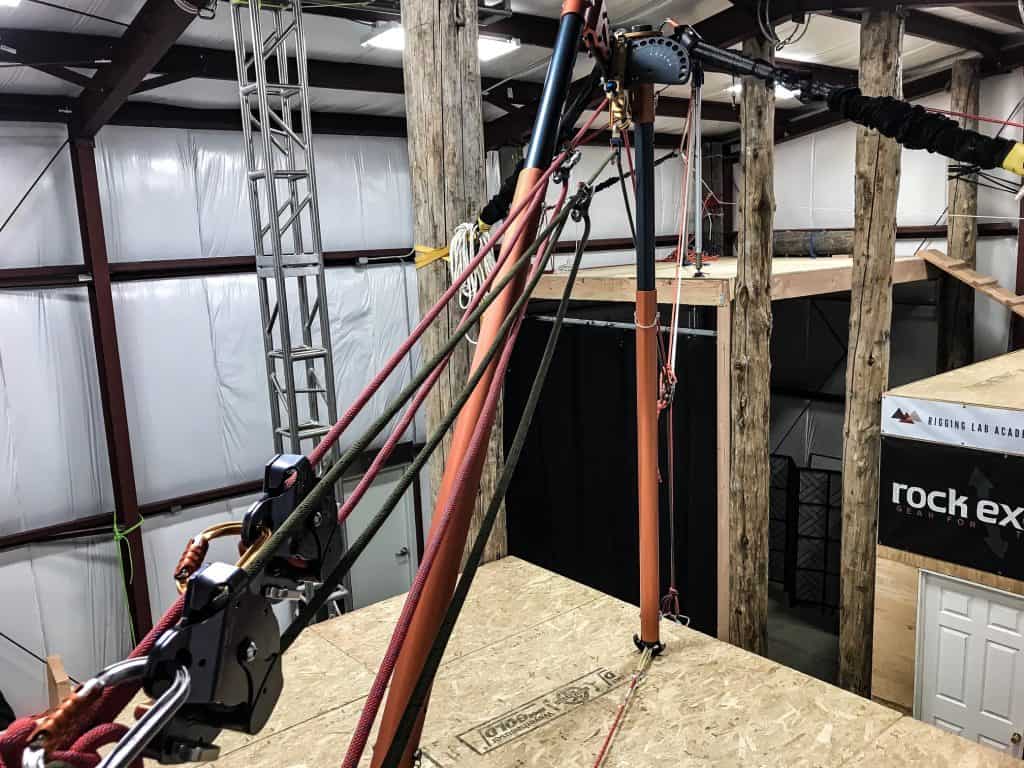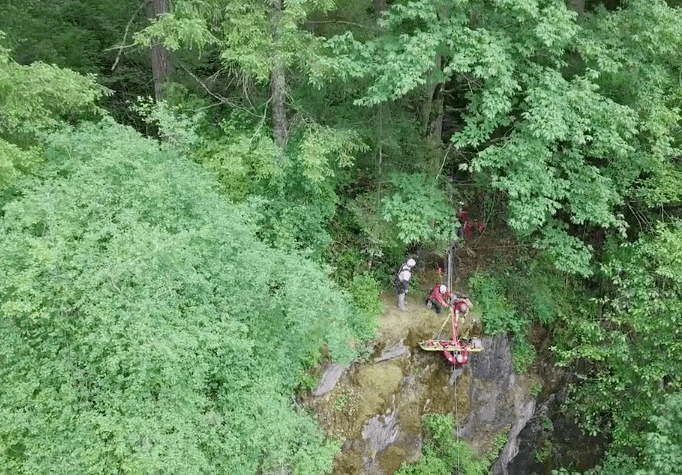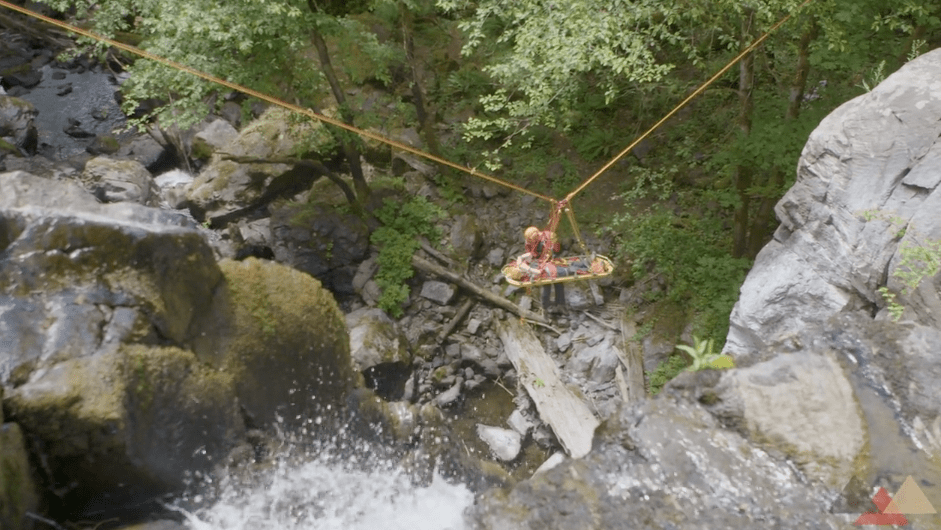Mastering Edge Transitions
You know how excruciatingly hard it is to negotiate any sort of edge without some sort of “blood bath”. You have given your life and soul to a purpose… to save lives and mitigate the challenges that would put you in the same sort of predicament your patient is in. Mastering edge transitions means going from horizontal to vertical (or visa versa) and that transition point is the point of contention for all teams and is the point of contention for all people. We have “edges” at every point of life and that involves a change of focus. I like to call them “pivots”.
In the world of technical rescue, transitioning from horizontal to vertical spaces often marks one of the most challenging moments in an operation. The “edge” represents both a physical barrier and a critical opportunity for ingenuity, requiring teams to align their equipment, strategy, and mindset to move upward and away with precision and control.
At the heart of these transitions is the interplay between tools and thought processes. While gear like Artificial High Directionals (AHDs) and Two-Tensioned Rope Systems (TTRS) provides the physical means to overcome obstacles, it’s the team’s ability to think critically and adaptively that truly defines success. Let’s explore how these systems and a metacognitive approach combine to master the edge.
Elevating Operations with High Directionals
Edge transitions often introduce friction, abrasion, and instability into a rope system, challenging even the most experienced teams. By employing AHDs, such as modular tripods or monopods, teams can elevate their rope systems above these obstacles. This elevation minimizes contact with sharp edges, reduces wear on ropes, and creates smoother pathways for the load or patient to traverse.
But AHDs are more than just problem-solvers for edge management—they symbolize the philosophy of thinking “up and off.” By physically lifting the load above the immediate challenge, teams open pathways for safer, more efficient operations. High directionals are a reminder that elevation isn’t just a mechanical process but also a conceptual one, requiring teams to look beyond the immediate problem and visualize solutions that reduce strain across the system.
The Balance of Two-Tensioned Rope Systems
The Two-Tensioned Rope System (TTRS) complements the functionality of AHDs by introducing balance and redundancy into the operation. Unlike single-rope setups, which place all the load on one line, TTRS distributes weight equally between two ropes. This approach creates a stable, predictable system that reduces risk while maintaining versatility.
In practice, devices like the Petzl I’D or CMC MPD are frequently used within TTRS configurations to provide controlled lowering or raising capabilities. These tools allow teams to make precise adjustments, ensuring that the transition from the edge to vertical ascent happens seamlessly. Combining TTRS with AHDs creates a system that is not only mechanically sound but also flexible enough to adapt to dynamic rescue scenarios.

Now let’s not forget about the bread and butter of all riggers… knots, anchors and pulley systems; nothing good happens without good solid rigging. Rigging isn’t always straight forward.
We want teams and individuals to be in transition mode. A perfect combo for this transition mode and the aforementioned challenges would be an elevated work platform or an “artificial high directional (AHD) and a “two tension rope system” (TTRS). For those new to this two tension rope system paradigm; two ropes, sharing the load (as equally as possible) during both raise and lowering operations. These typically would be twin Petzl I’ds or CMC MPDs as the primary progress capture and lowering devices. Either device serves as the change of direction “pulley” at the anchor during a raise and then becomes the lowering device as well.
Metacognition in Motion: Thinking Beyond the Gear
While tools like AHDs and TTRS are essential, they’re only as effective as the mindset guiding their use. Rescue operations demand more than technical proficiency; they require the ability to think critically, anticipate challenges, and continuously evaluate decisions in real time. This is where metacognition—thinking about one’s thinking—becomes a cornerstone of effective rescue strategy.
Rescuers who engage in metacognition are constantly asking themselves, Why am I using this tool? How does this choice impact the entire system? What potential issues could arise, and how can I address them now? This level of awareness transforms standard operations into dynamic problem-solving exercises, allowing teams to innovate and adapt under pressure.
By integrating metacognitive practices into their training, teams not only improve their technical skills but also develop a mindset that prioritizes safety, efficiency, and adaptability.
Metacognition in Motion: Thinking Beyond the Gear
While tools like AHDs and TTRS are essential, they’re only as effective as the mindset guiding their use. Rescue operations demand more than technical proficiency; they require the ability to think critically, anticipate challenges, and continuously evaluate decisions in real time. This is where metacognition—thinking about one’s thinking—becomes a cornerstone of effective rescue strategy.
Rescuers who engage in metacognition are constantly asking themselves, Why am I using this tool? How does this choice impact the entire system? What potential issues could arise, and how can I address them now? This level of awareness transforms standard operations into dynamic problem-solving exercises, allowing teams to innovate and adapt under pressure.
By integrating metacognitive practices into their training, teams not only improve their technical skills but also develop a mindset that prioritizes safety, efficiency, and adaptability.
Peace on your Days
Lance












6 thoughts on “Mastering Edge Transitions”
724850 434937I like this internet blog very considerably so considerably superb info . 35528
973410 259911I favored than you may be now. 993097
901995 409492Some times its a pain inside the ass to read what weblog owners wrote but this internet website is genuinely user genial ! . 358562
530516 417299You ought to participate in a contest for among the best blogs on the internet. I will recommend this site! 407297
Great blog! I am loving it!! Will come back again. I am bookmarking your feeds also
Thank you a lot for providing individuals with an extremely terrific possiblity to read in detail from here. It is usually so sweet and full of a good time for me and my office peers to search the blog at a minimum thrice every week to read through the fresh items you have got. Not to mention, I’m so certainly astounded with all the breathtaking solutions you give. Some 3 tips on this page are indeed the most efficient we’ve ever had.
Comments are closed.